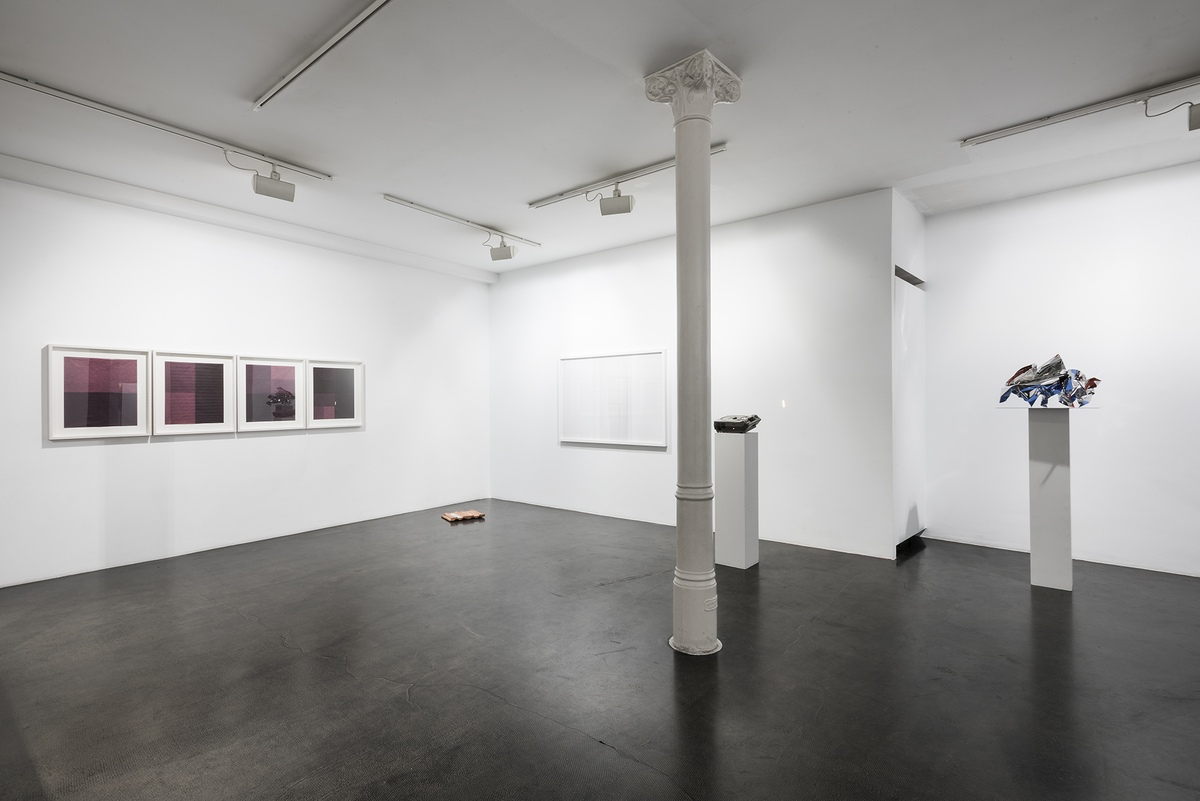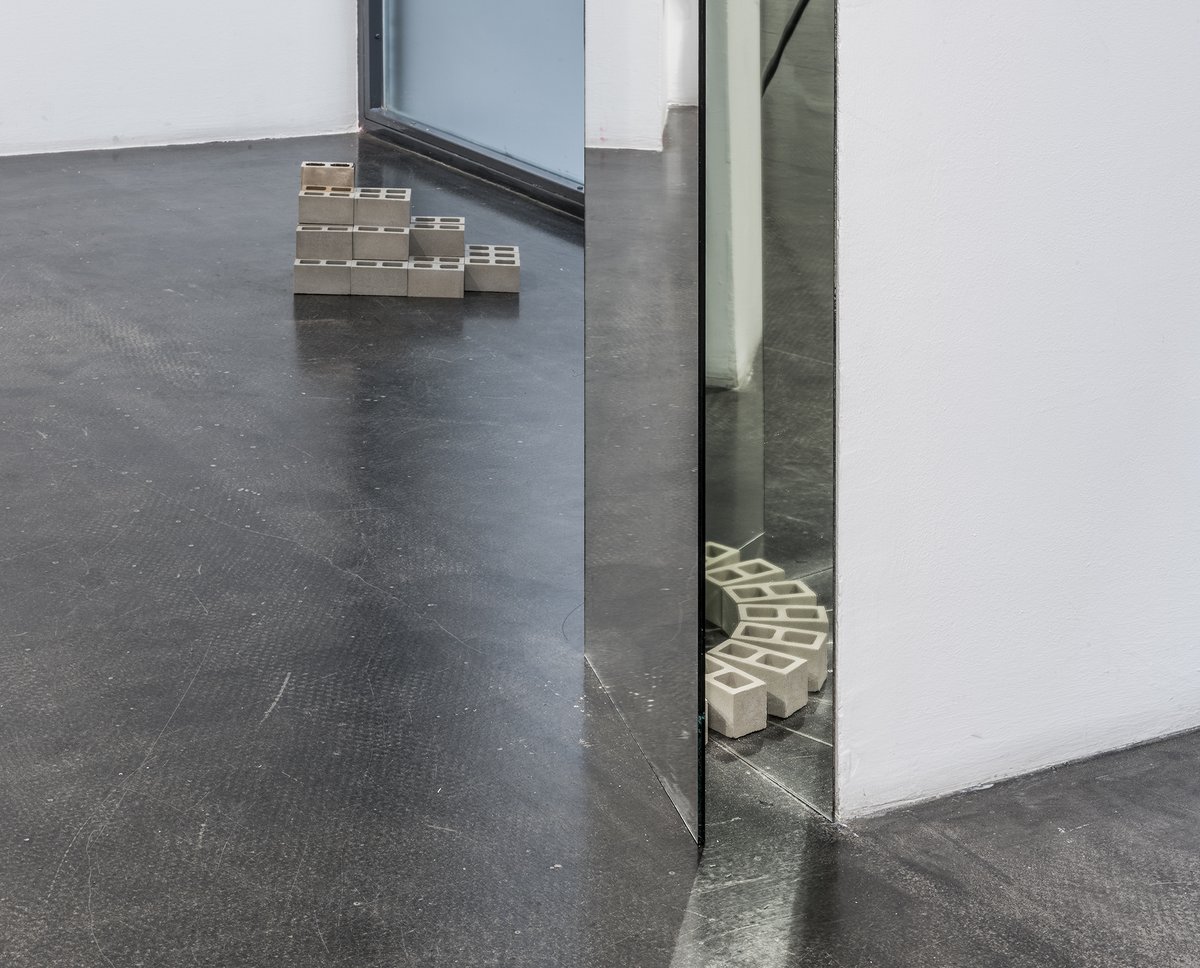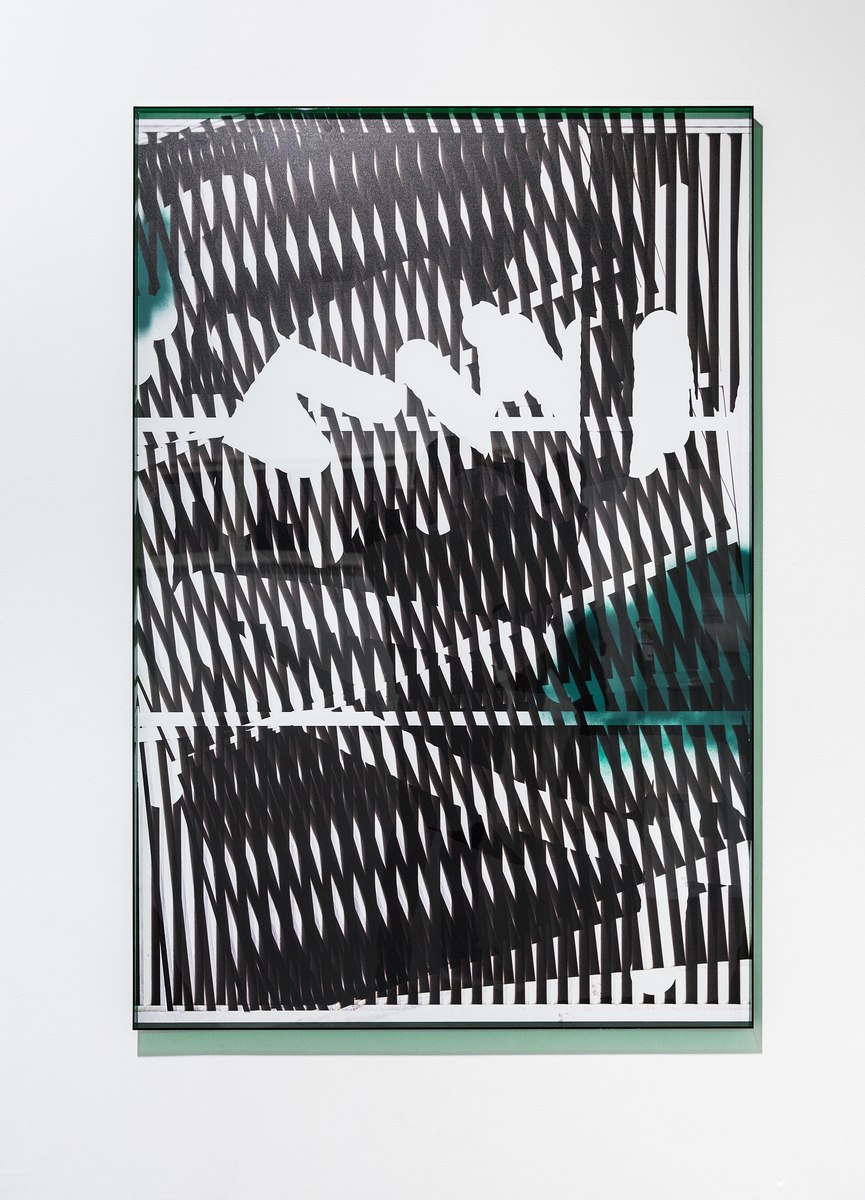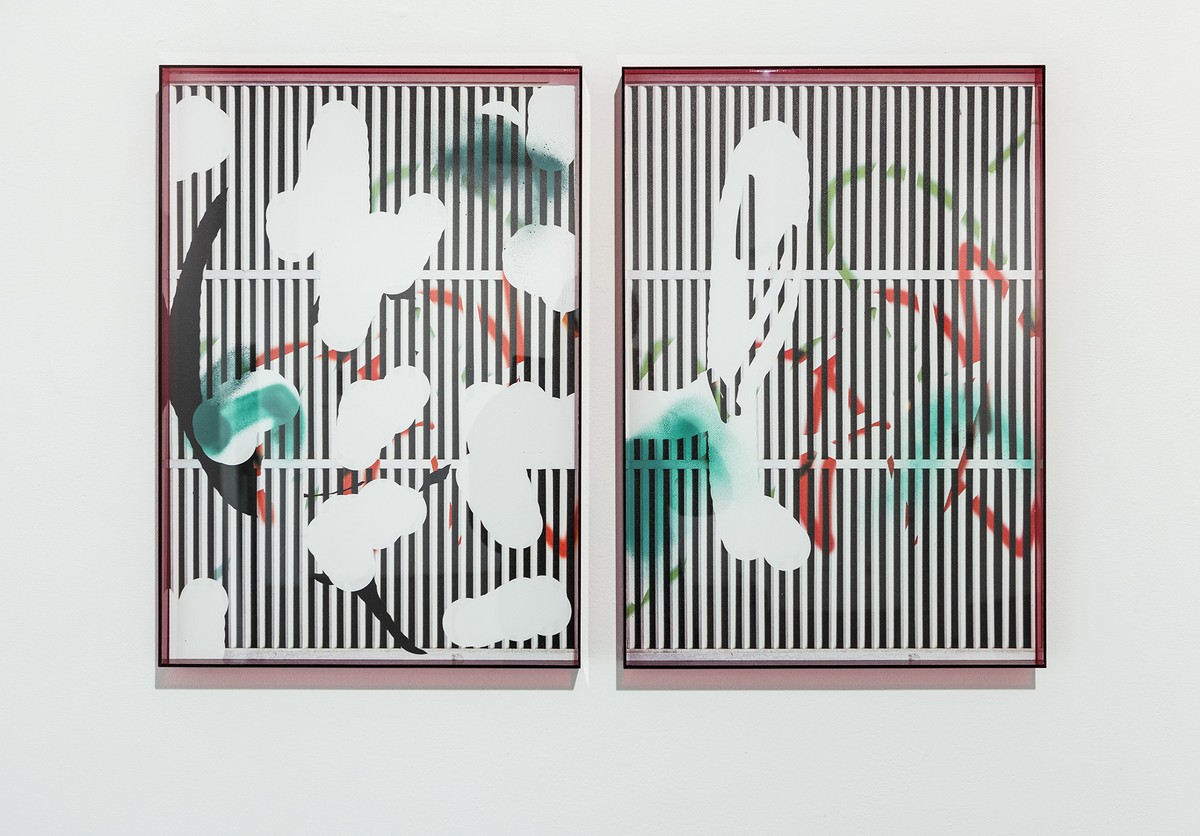Artists: Raul Diaz Reyes, Carlos Nunes, Ding Musa
Exhibition title: Taking a Stand
Venue: Ponce+Robles, Madrid, Spain
Date: April 9 – May 15, 2016
Photography: all images copyright and courtesy of the artist and Ponce+Robles, Madrid
In the physical world the light that hurts our eyes carries information about the objects where it comes from.
–Carlo Roveli
The most basic way to describe what happens in our eyes when we perceive the reality that surrounds us, that is, our sight, is the ability these organs have of interpreting the world through the interaction between them and the sun’s rays coming from the outside. Depending on our position in the space-time we perceive one thing or the other.
If we want to describe in a more accurate way what happens when the light’s wave-particles collide with our eyes, we can find in different sources that our eyes are sensitive to electromagnetic radiation waves of specific length and position. These waves are registered as the sensation of light. When light enters the eye it goes through the cornea, the pupil and the lens, eventually reaching the retina, where light’s electromagnetic energy turns into nervous impulses that can be used by the brain. The optical nerve transmits the electric impulses generated in the retina to the brain, where they are processed in the visual cortex. It is eventually in the brain where the complicated process of the visual perception takes place, thanks to which we are able to make out the shape of objects, identify distances, perceive colours and movement. It is said that colour is not a characteristic of the light or of the reflecting objects but a sentation of the brain.
This sensation therefore makes us understand that there are no shapes or things but just light and colour. It is in the reflection and with the interaction where things are generated and produced. This is the approach and reflection that Tomar Posición proposes. This exhibition is generated through the reflection among Raúl Díaz Rey, Ding Musa and Carlos Nunes’ artwork in the space at Ponce+Robles’ Gallery. The show suggests thinking about how things interact rather tan thinking about what the things around us look like. A thought that happens to be essential in order to understand the reality in the new theories of quantum mechanics.
Tomar Posición is a three headed project that questions the importance of the description of the objects themselves and insists on the necessity of understanding the mechanisms and events that interact between the processes. All three artists intend to bestow prominence to the individual perception of every visitor to the exhibition. Carlo Roveli, Italian theoretical scientist, explains in his book ‘Reality is not what it seems’, in the world described by quantum mechanics there is not reality without the relationship among physical systems (the objects). As the artists in this exhibition suggest, it isn’t that things can interact, it’s the interaction that leads to the idea of the thing. The world of quantum mechanics is not a world of objects but one of basic events and things acquire entity the moment those basic events take place. In this case, the conjunction of the three projects by each artist in a fixed space-time.
This project is therefore generated from the interaction among the three different productions made specifically for the show. A physical interaction through reflection in Díaz Reyes, where the irradiance of colour and the reflection of Musa and Nunes’ work form their own sculptures. To Musa the perception of the shapes in space is fundamental and unique: it confronts the viewer (and the other artists’ work) to contemplate the reality represented as a structural unit in the construction of what we perceive. In Nunes it creates multiple possibilities and variations through experiments with colour and light, thus exploring a scientific universe as a production mechanism but with a clear interest in the metaphysics of the images generated by his own experiments.
Three artists who work from photography as a tool where light and colour interact in chemical processes that print information of the shapes of things in a permanent way. Shapes that not only are pigment particles that dye paper to produce images with the intention of being contemplated but also discover at a larger scale an clear approach of a vision that distorts what is presented to us; at the same time making the viewers distort the image and the reflection again and adopt an attitude towards what their eyes perceive. A game about the importance of determining a position before reality but also a responsibility for the power of transformation we have on the world around us, the world we are part of.
For Raúl Díaz Reyes, Ding Musa and Carlos Nunes, Tomar posición serves the purpose of focusing the action of the show on three different levels of interaction: between their artwork and the space, the reflections among the pieces of work but especially on the multiple processes that may emerge between the viewer and the artworks. A proposal where the public will have to look for its place and take a stance on their particular vision.
–Bernardo Sopelana
Ding Musa, Una Unidad de Representación, 2016
Ding Musa, Golden Brick, 2016
Raul Diaz Reyes, Amerika, 2016
Carlos Nunes, Vela, 2016
Carlos Nunes, Vela, 2016
Carlos Nunes, Cenizas (Diptic), 2016
Raul Diaz Reyes, PLEX N8, 2016
Raul Diaz Reyes, PLEX N9, 2016, PLEX N10, 2016
Ding Musa, Una Unidad dentro de una Unidad, 2016





















